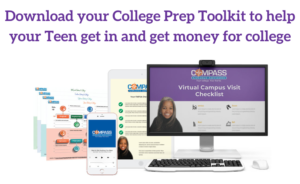Choosing a college isn’t a quick or easy decision for most students. Students must consider five key features of a school when choosing a college: Academic fit, Social fit, Financial fit, Vocational fit, and Cultural fit.
Choosing a college based on academic fit
Today, we’re going to discuss academic fit. As you can imagine, choosing a college with the right academic is critical. But what does it mean?
Academic fit refers to how the faculty teaches, the academic priorities of the college, and what the learning environment is like. It also refers to the distinct curriculum types a college may offer. A complete review of the college’s website and a campus visit can help with determining the academic fit and choosing a college that’s right for you.
Make the most of your campus visit with these five top tips.
Before even taking your first steps, it helps to understand the bigger picture of how colleges are distinguished by their different academic curriculums. In my experiences working with families, few give consideration to these distinctions. Often, they aren’t even aware they exist.
From a college admissions perspective, students should at least be aware of these distinctions when they write their application essays or interview at colleges. Once admitted, the college that the student attends can make a significant difference in the classes that students can take in college and their satisfaction with the academic rigor.
So, what are the three types of academic curriculums? Open, core, or distributed.
Let’s briefly discuss each type and their key differences, along with colleges to explore.
Is an open curriculum the right academic fit?
There are only a hand-full of colleges and universities that provide a truly open curriculum.
This means students are free to choose which classes they want to take. There are no general education requirements and students can design their own path to a major or concentration. There may be specific requirements within a particular major, but students are free to pick from any range of classes.
Some schools with an Open Curriculum:
- Amherst College
- Brown University
- New College of Florida
- Smith College
- University of Rochester
The thing is, not every student can handle an open curriculum. Sure, these colleges may have the brand name. But students must be very disciplined to navigate four years of undergraduate in a school with an open curriculum.
Is Columbia University’s Core the right academic fit?
The use of a Core curriculum started in 1919 at Columbia College. It remains their primary approach to higher education. A Core curriculum means there are specific courses all students must take, regardless of their majors. (In fact, when you visit the Columbia campus, a building lists the authors of core readings for all undergrads.)
The idea is to provide every student with a broad range of knowledge in many subjects and to support intellectual growth.
Other colleges with a core curriculum:
- Auburn University
- Boston University
- Purdue University
- University of Chicago
- University of Notre Dame
Academic fit can be different at most colleges
A distributed curriculum is a hybrid of a core and open curriculum.
There aren’t specific classes that every student is required to take. But, there are guidelines to the number of classes that each student must take in a given academic area. This curriculum provides the student with the flexibility to choose a class that interests them. At the same time, still providing a structure to their education.
Most colleges in the US have distribution requirements. What I enjoyed about a distributed curriculum when I attended Stanford is that I took classes in areas that I may not have learned about otherwise. For example, as an undergraduate, I studied Calculus, Petroleum Engineering, Philosophy. But I fell in love with Linguistics (a topic I had never heard of before college!).

Colleges with distributed curriculum:
- Bowdoin College
- Cornell University
- Dickinson College
- Georgetown University
- Northwestern University
- Reed College
- Stanford University
- Swarthmore College
- University of Tampa
- Wellesley
Now, the next step to take with this insight is to match the needs and interests of the student. Let’s say a teen has an interest in engineering and doesn’t enjoy writing. Then, it’s important to research colleges that offer engineering with little to no writing requirements for graduation. An official campus visit is the next step before applying if a teen is still interested after the research is completed.
How have you helped your teen with finding the right academic fit?
If you’re looking for one-on-one guidance to help you find the school with the right academic fit, click here to learn about my webinar.
Want to see more posts like this? Don’t miss these:
7 College Essentials Worth Investing In For Your Freshman Year
Top 10 must-dos for college-bounds juniors
7 ways to support your child during the college application process


